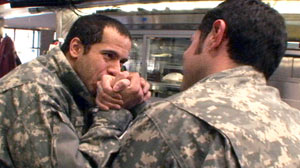

Reliability of character in investigations ĭuring the 1950s, Privy Council changed the criteria needed for civil servants to keep or maintain their security clearance. A person would be flagged for investigation if officials suspected them of holding "subversive political associations," for example, if a worker was thought to have connections to communist or fascist organizations. During this time, the RCMP would investigate a civil servant through a file check or field investigation. Starting in 1948, several cabinet directives were sent out by the committee asking the RCMP to investigate into the loyalty of government workers. Early investigations and questioning political loyalty The committee was charged with overseeing security within the civil service, and investigating civil servants who had believably questionable loyalties. In response to the commission, the government created a new committee within the Privy Council of top civil servants and members of the RCMP. The affair concluded that numerous government workers had betrayed the government. Following the defection, the Canadian government launched the Kellock–Taschereau Royal Commission in 1946. The details of the defection revealed that Soviet Union had a large spy network in Canada that compromised the Canadian civil service, military and National Research Council. Questions about loyalty within the civil service began to preoccupy the Canadian government in 1945 following Soviet cipher clerk Igor Gouzenko's defection. Background 1940s Gouzenko Affair and Soviet espionage Prime Minister Justin Trudeau formally apologized in November 2017 for its discriminatory policies and guaranteed a $145 million settlement for affected Canadians. In October 1992, the federal government acknowledged that homosexual discrimination could not be justified based on Section 15 of the Canadian Charter of Rights and Freedoms. Additionally, numerous homosexuals lost their security clearance, and were demoted or terminated. As a result, people were often forced into confession or made to spy on their co-workers. The purge was characterized by the intensity of its investigations, with security personnel often using extreme questioning tactics and pseudo-scientific devices such as the fruit machine. In response to the Canadian government and military's concerns, the RCMP began a purge to investigate and discover homosexuality in areas of the Canadian workforce that were deemed important for national security. The Canadian government determined that homosexuality was a "character defect," and security risk as homosexuals could be possible targets for blackmail by the Soviets.


In the late 1940s and early 1950s, the RCMP was charged with investigating the loyalties, and later the reliability of character, of civil servants and Canadian armed forces members. ĭuring the early stages of the Cold War, increased surveillance and interference from the Soviet Union resulted in the Canadian government and military to become increasingly worried about the loyalty of their employees.
GAY SPY CAM MILITARY SERIES
Occurring between the 1950s and the 1990s, the Gay Purges were a series of mass discrimination and expulsion of Canadian workers in the civil service, Royal Canadian Mounted Police and armed forces due to their suspected homosexuality. Expulsion of suspected homosexuals from Canadian civil service


 0 kommentar(er)
0 kommentar(er)
